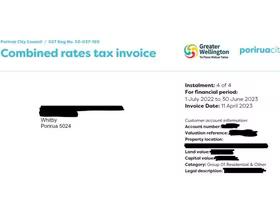Improving Māori wellbeing
Lifting the skills and opportunities available for Māori has been one of the key priority areas of the government’s Wellbeing Budget. Plenty has been written about the socio-economic, health and other challenges facing Māori over the past couple of decades, yet many of these interrelated issues remain.
But why the focus on Māori? Put simply, there are significant disparities between Māori and non-Māori in Aotearoa, but also a range of opportunities and challenges that, if addressed, would have wide ranging impacts across New Zealand. In this article I discuss some of the economic challenges and opportunities facing Māori, both today and in the future. These challenges and opportunities are identified using insights from Infometrics’ Te Matapae platform, which details current and future employment opportunities for Māori.
A young, growing population…
The Māori labour force has grown considerably over the past 20 years, largely driven by wider Māori population growth of 50% since 1996. Between now and 2038, the Māori population aged 15-64 is expected to increase by 36% (around 136,000 people), not surprising given the high proportion of Māori rangatahi (young people) relative to non-Māori (see Graph 1). As older non-Māori baby boomers retire, current rangatahi will be critical in ensuring that employers can access labour.
Graph 1
…with a workforce under-represented in more highly paid jobs…
Māori in employment are more likely to be employed in lower skilled jobs such as labourers or machine and factory workers, which not only are low paying, but are more susceptible to automation and economic downturns. Concerningly, this focus on Maori in low-skilled work hasn’t changed in recent years, with Māori employment by skill level remaining relatively unchanged, and at lower levels than non-Māori (see Graph 2). We only need to look at the global financial crisis to see how vulnerable Māori are in employment relative to non-Māori – between 2009 and 2011 Māori employment fell by 3.6%pa, compared to a drop of 0.7%pa for non-Māori.
Graph 2
…and high unemployment rate.
Māori unemployment rates have historically been higher than those for non-Maori (see Graph 3), signalling not only an underutilisation of resources, but also a financial, and often social, drain on society.
Graph 3
But there are opportunities for rangatahi…
Today’s rangatahi are going to be tomorrow’s workforce. It’s important that we support and nurture their aspirations to achieve, by ensuring they have the skills and attributes that employers of tomorrow require. This means increasing Māori achievement at school and helping rangatahi develop a plan for their future.
School is a key area to start embedding these skills. Given this target area, it’s reassuring that in recent years the gap between NCEA Level 2 attainment for Māori and non-Māori has shrunk. However, we need to broaden our focus beyond Level 2. However, the gap in NCEA Level 3 attainment for Māori and non-Māori has remained relatively similar over time, indicating less overall change, and more a focus on an education ‘target’.
Graph 4
Seemingly responding to this unchanged gap, the government has recently announced planned changes to the NCEA system which could increase Māori attainment at NCEA Level 3. These changes include scrapping fees and introducing an alternative to University Entrance (UE) at Level 3 but are only once piece of the jigsaw.
… and those already in the workforce.
Approximately 80% of the workforce in 2030 are already in the workforce. With automation and the future of work already starting to have an impact on employment, we need to look at how to ensure people transition into more secure higher-paid jobs. This is particularly the case for Māori, where Infometrics data shows that Māori in employment are over-represented in lower skilled occupations that pay lower wages, have lower growth prospects and are more susceptible to automation.
Upskilling and building on the skillsets of Māori already in employment is key to helping drive economic success as well as improving overall wellbeing. The government’s proposed changes as part of the review of vocational education (RoVE) has a part to play in Māori skills development, by focusing on opportunities for those in vulnerable or low skilled occupations and industries to upskill so they can transition into higher paying and more sustainable jobs.
Improving wellbeing takes time
If we are serious about improving our overall wellbeing, we need to accept that change takes time – improving wellbeing for Māori or other populations with similar characteristics, such as Pasifika, will take more than an election cycle.
The issues of today are likely to outlast the current frenzy around wellbeing, but it remains important that government, employers, iwi and whanau work with Māori rangatahi to help them articulate their aspirations and prepare them for the future. Anything less will only entrench economic and social issues in Aotearoa.
Te Matapae is a web-based profile that Infometrics has developed to support iwi, economic development agencies and local authorities understand the current position and future opportunities for Māori in their areas. Data is available down to a territorial authority level. To learn more about Te Matapae, click here, or contact Shaun Twaddle (shaun.twaddle@infometrics.co.nz).


















